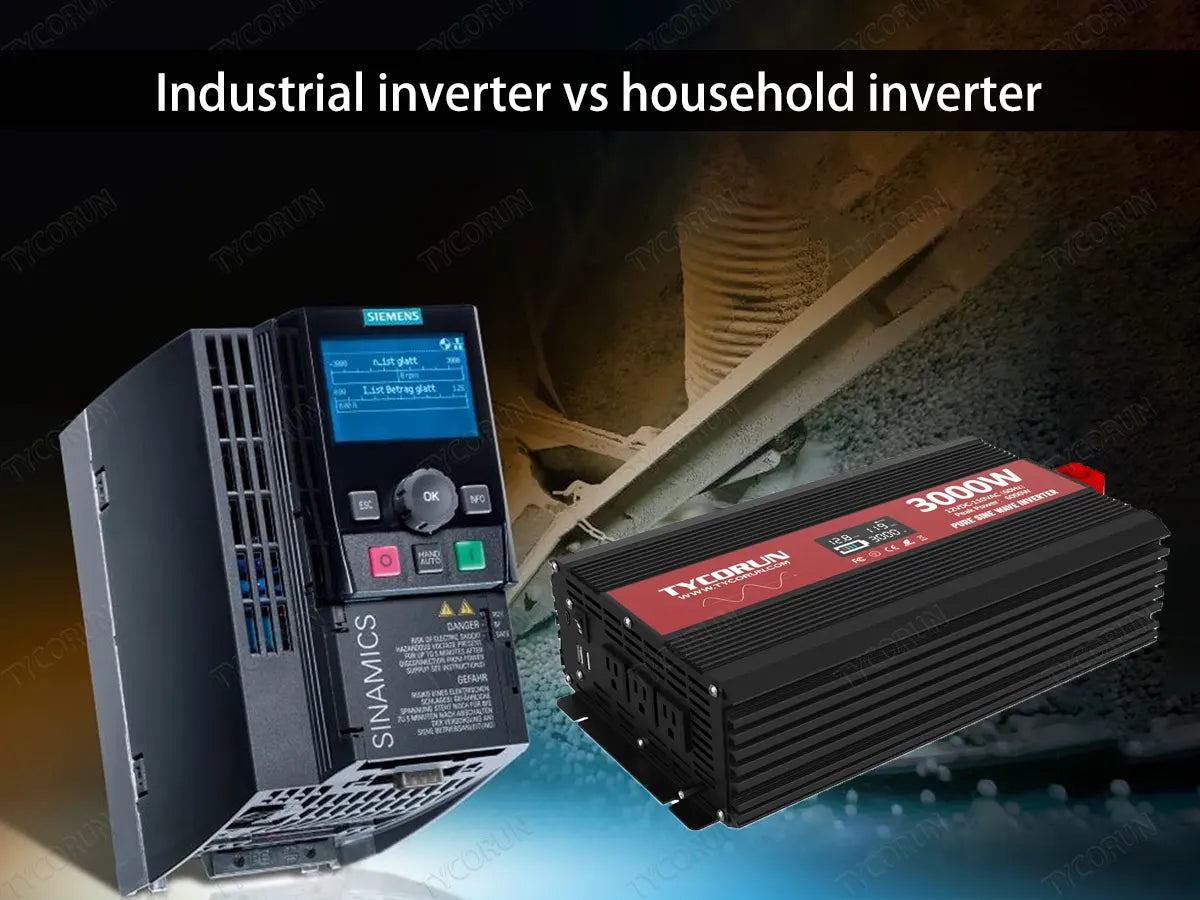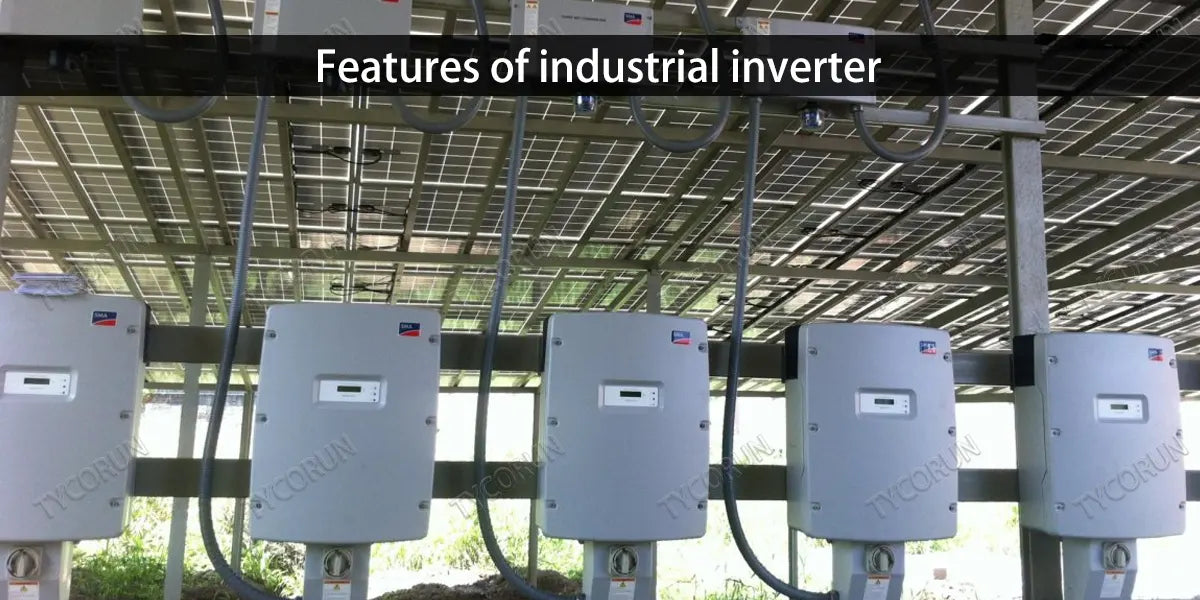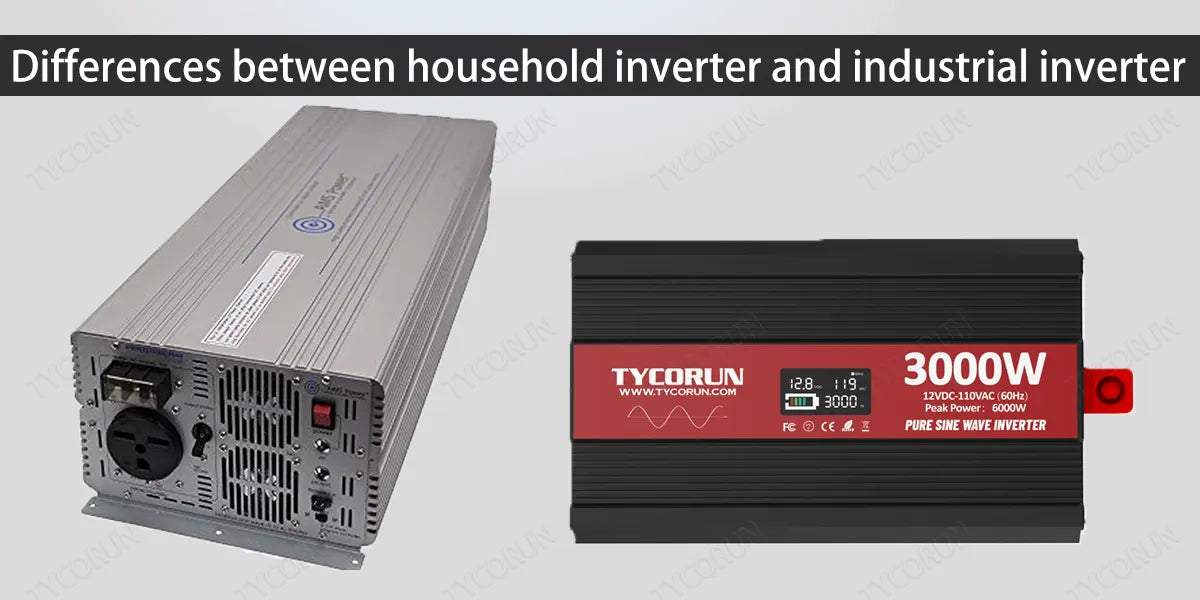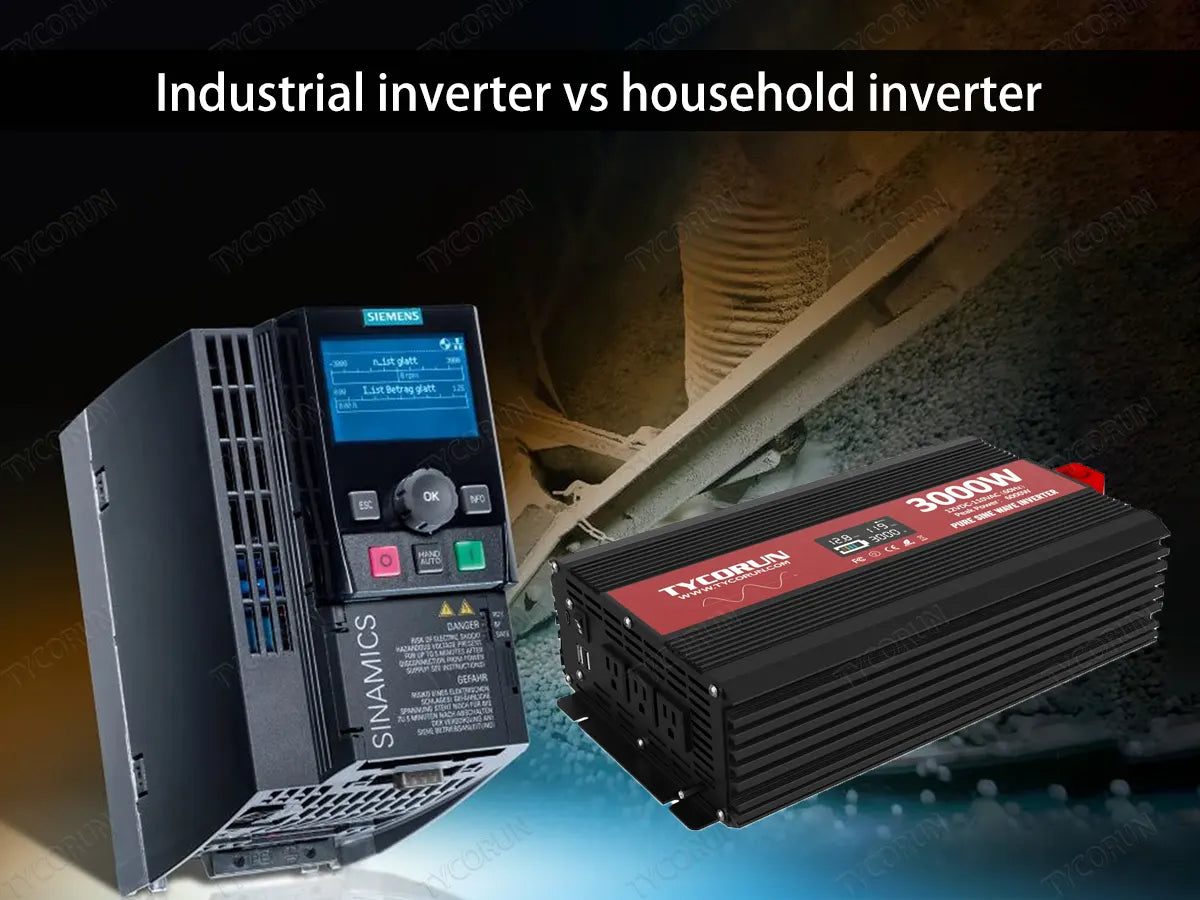
There are several types of inverters, do you know what are they, this article gives you an introduction to the industrial inverter and home inverter, they are two different devices, they have many differences in design, function and use.
This article will introduce the difference between household inverter and industrial inverter and give some choices and suggestions.
Main content:
1. Features of industrial inverter
In today's industrial environment, the stable operation of the power system is crucial to the smooth running of the production process. Industrial inverter, as an important power electronic device, plays a key role in ensuring the stability of the power system and energy saving.
- High stability: industrial inverter has a high degree of stability and can operate stably in various poor industrial environments. In addition, it also has a self-protection function, which can automatically cut off the power supply when the equipment fails to protect the safety of equipment and personnel.
- Energy saving and environmental protection: industrial grade inverter has high energy conversion efficiency, which can better reduce energy waste. At the same time, due to its use of high-frequency conversion technology, making the equipment small size, light weight, easy to transport and installation.
- Easy maintenance: the design of industrial inverter makes its maintenance and repair easy. Most of the equipment is equipped with automatic diagnostic function, which can monitor the running status of the equipment in real time, and find out the problems and timely alarm, which greatly reduces the maintenance cost and downtime.
- Strong adaptability: industrial grade inverter has a wide input voltage range and can adapt to different DC power inputs. At the same time, its output voltage and frequency can also be adjusted as needed to meet the needs of various industrial applications.

2. Working principle of industrial inverter
The working principle of industrial inverter can be summarized as "DC - AC" conversion process. Specifically, the DC power supply is first switched at high frequency by semiconductor switching devices to produce AC power at a certain frequency.
The AC power is then smoothed by a filter circuit to minimize voltage and current fluctuations. Finally, the output voltage and frequency are adjusted by a control system to meet the needs of industrial applications.
3. Application of industrial grade inverter
Due to its unique characteristics and working principle, industrial inverter has a wide range of applications in many industrial fields. For example, in the power system, industrial inverter can be used to stabilize power output and improve power quality.
In the manufacturing industry, industrial inverter can be used to drive all kinds of power equipment to improve production efficiency. In the field of new energy, industrial inverter can be used to convert unstable energy such as solar energy and wind energy into stable alternating current (AC).
As an important power electronic equipment, industrial inverter plays a key role in ensuring the stability of power system and energy saving. Its high degree of stability, energy saving and environmental protection features, easy maintenance advantages and adaptability and other characteristics make it in many industrial fields have a wide range of applications.
With the continuous progress of science and technology, we have reason to believe that industrial inverter will play a greater role in the future industrial development.

4. Differences between household inverter and industrial inverter
① Design differences
A power inverter for home backup is designed to meet the electrical needs of a home, usually using a single-phase AC power source. Its capacity is generally small, usually between a few hundred watts and a few kilowatts. The industrial inverter is designed for industrial production and uses a three-phase AC power supply. Its capacity is larger, generally between several kilowatts and several hundred kilowatts.
② Functional differences
- Output waveform: Household inverter waveform is pure sine wave, which is suitable for supplying power to household appliances with high voltage requirements, such as TV sets, air conditioners, etc. industrial inverter can output sine wave, square wave or pulse width modulated waveform, which is usually used to drive industrial equipment and motors. If you happen to be interested in a pure sine wave inverter for your home, Tycorun has 1000w inverter to 3000w inverter sizes for you to choose from.
- Grid access: Household inverters are usually able to realize networking with the grid, which can feed excess power back to the grid and realize automatic regulation and energy saving. While industrial inverters need to operate with the grid in some applications, they may also operate in an independent mode.
- Control system: Household inverters usually have a simple control system, which can be operated by a small touch screen or buttons. The industrial inverter usually needs more complex control system, which can be remotely monitored and controlled by external monitoring equipment and host computer.
③ Recommendations for selection
When selecting an inverter, comprehensive consideration should be made based on actual needs and usage.
- Load capacity: first of all, determine the load capacity of the required inverter, i.e. determine the rated capacity of the inverter according to the power of the equipment to be powered.
- Output waveform: choose a suitable inverter according to the requirements of the equipment to be powered on the waveform. If you need to supply power to household appliances, you should choose a household inverter with pure sine wave output. For further information, you can also refer to pure sine wave vs modified sine wave inverter.
-
Reliability: industrial inverter usually needs to have higher reliability and stability, you can consider choosing the equipment with more protection functions and redundancy design.
- Control and monitor demand: according to the inverter control and monitoring needs, select the control system function to match the inverter. If you need remote monitoring and control, you should choose an industrial inverter with corresponding functions.
- Price and after-sales service: finally consider the price and after-sales service of the inverter, choose cost-effective products, and pay attention to the quality and reliability of after-sales service.

In conclusion, there are obvious differences between household inverters and industrial inverters in terms of design, function and use. When choosing an inverter, comprehensive consideration should be made according to the actual needs and uses to ensure that the demand for power conversion can be met.
5. FAQs
① What should I pay attention to when using an industrial inverter?
First of all, industrial inverter needs to avoid overload and short circuit in the process of use, and avoid overload work for a long time, so as not to cause damage to the equipment. Secondly, industrial inverter needs to maintain a dry, ventilated and clean environment, avoiding the entry of water vapor and dust and other impurities.
Finally, the use of industrial inverter should pay attention to the prevention of electrostatic interference and electromagnetic interference, to avoid equipment failure or affect production.
② How do I maintain an industrial grade inverter?
Maintaining the industrial inverter mainly has the following aspects. First of all, it is necessary to carry out regular inspection and maintenance of the equipment, and timely replacement of damaged parts.
Secondly, it is necessary to keep the equipment clean and dry to prevent dust and water vapor from entering the equipment. Finally, it is necessary to avoid prolonged overload work, and take some measures to reduce the temperature of the equipment, such as installing fans and radiators.
③ How do industrial inverter and UPS work together?
The industrial inverter and the uninterruptible power supply (UPS) can be used together to ensure stable power supply to the equipment. The uninterruptible power supply mainly provides power security, when the power outage or voltage instability, it can be switched to the backup power supply in time.
The industrial inverter can provide power conversion and control functions to ensure that the equipment can work normally. Both with the use of equipment can greatly improve the stability and reliability.
Related posts: global top 10 best solar inverter brands, top 10 solar inverters in Australia, top 10 best power inverter companies in Europe
















